Industry Insights: Mark Stielow
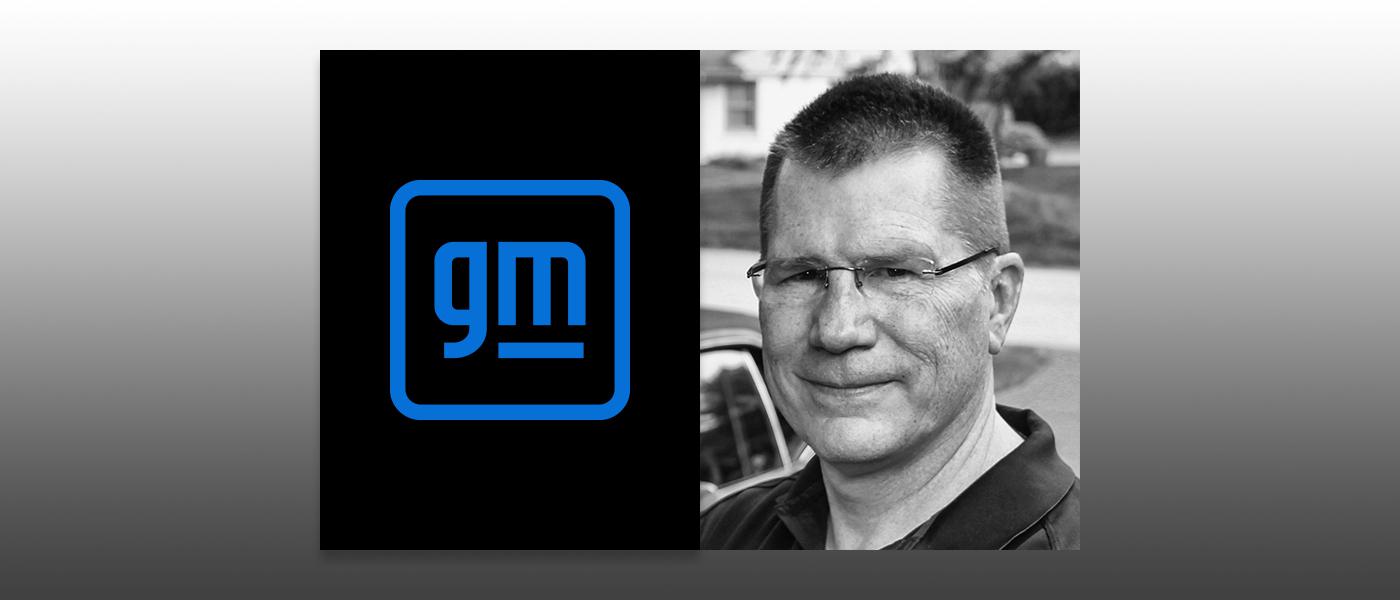
This self-described “hot rodder” who guides GM’s motorsports efforts and moonlights building “Pro Touring” Camaros explains why collaboration—even among competitors—is beneficial, why a new SUV would likely dust an old muscle car, and why internal combustion engines won’t leave racing anytime soon.
Automotive performance is not just a thing; it’s a state of mind, a culture, a way of life. That truth is self-evident with Mark Stielow, who this past October was named director of motorsports competition engineering at General Motors.
A native of Missouri, Stielow was inspired by a passion for engineering and performance at a young age. A graduate of Missouri University of Science and Technology, Stielow joined GM as a test engineer in 1991. It began a long and winding career that saw Stielow leave the automotive giant in 1994 before returning in 1999 and resuming his ascendency within the company.
Stielow has shown a unique level of versatility, as he has managed what could be viewed as parallel careers over the past 30 years. While maintaining his influence and leadership at the corporate level, Stielow has also cultivated his interests in vintage performance cars. A pioneer in the field, Stielow coined the phrase “Pro Touring,” which describes the thriving field of equipping vintage muscle cars with modern suspension and engineering. Stielow’s many muscle car “builds” have fascinated enthusiasts and landed him—and his creations—on the cover of countless performance magazines.
Stielow’s leadership at GM comes at a pivotal time in automotive performance and manufacturing, as the industry navigates the tricky terrain of emerging technologies such as electric propulsion, and the impact of such technology on motorsports. Stielow recently sat down with PRI to discuss his role and the state of automotive performance.
PRI: I read a comment from you recently that said, “There is going to be some exciting stuff going on in motorsports in the next few years.” That’s an interesting statement. Give us a quick summary of the things that are coming that are especially exciting.
Stielow: What is definitely coming is that several programs will see hybridization, for example IndyCar. The whole industry is pivoting, and we’re definitely going to see more electrification in motorsports. So as our portfolio at GM maintains their classic IC (internal combustion) engine, we’re also doing a heavy pivot toward full electric on our motorsports side. In IndyCar we are definitely getting into the hybrid drive there, and with other series that utilize hybrid drives we are looking at that as well. We’ve been studying pretty hard.
Every sanctioning body that I deal with, they have approached us to ask us our ideas of full electric racing. We’ve had conversations with almost every form of racing, having discussions on what a full electric venue looks like. So there will be some interesting stuff going on, and we’re all going to have to sort out how we manage that and what it looks like. We’re currently kind of dipping our toe in the water with the Extreme E full-electric off-road race program working with Chip Ganassi Racing. We’re getting a little taste of that, trying to understand what it all means.
PRI: You took on your new role at GM last year, and I’m sure you hit the ground running. Looking back at the past few months, what’s been the most important thing you’ve tackled thus far?
Stielow: As we moved motorsports out from under Sales, Service, and Marketing to Engineering, we’re really trying to tie together the production side of our learnings and motorsports. I’ve spent a lot of time trying to transition learnings from what we do on the OE side to racing, and back and forth. That’s been the most challenging thing. The other thing is that we’re kinda laying out a strategy. I’ve always been a one-year, two-year, five-year plan kind of guy, so we’re trying to work with our marketing and our production people to tie those two things together. We’re into racing to build the brand, win races, and to help the identity of our brands: Chevrolet, Cadillac, GMC. But also we want to do technology transfer between motorsports on the production side. And the third thing is to grow people. Racing is…they don’t move the Indianapolis 500; that’s a hard date out there and you have to hit it. Racing breeds a certain quick, problem-solving mentality in people and engineers. I started my career in motorsports in the 1990s, and that really drove the sense of urgency to get things done on a timeframe. So one of the things I want to do, more for our motorsports operation, is be able to do those three things.
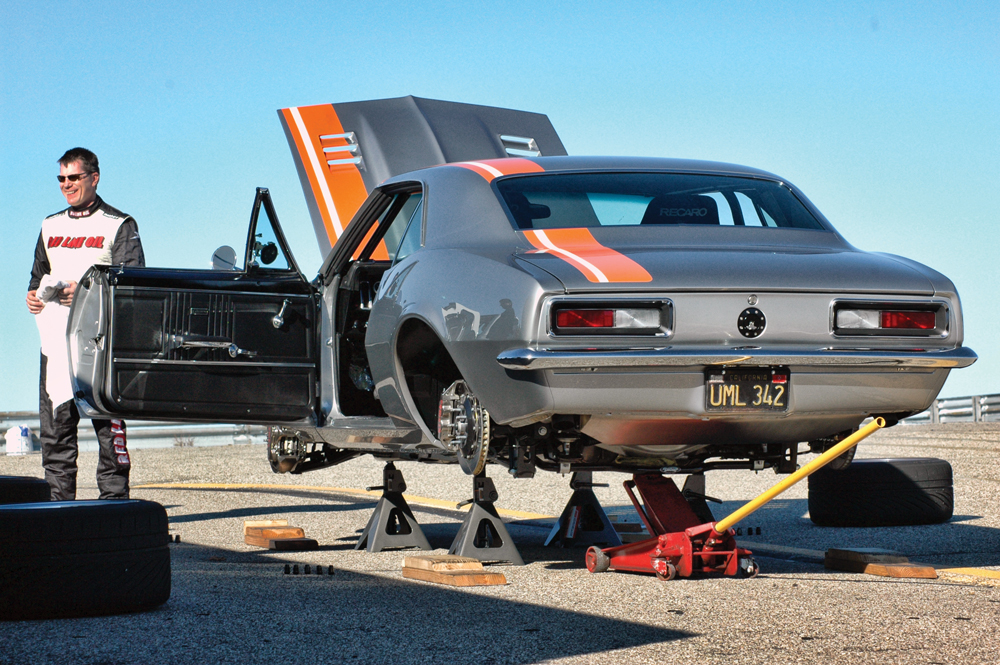
PRI: What’s it like to work for GM President Mark Reuss?
Stielow: He’s awesome. I’ve known Reuss for a long time, and he is a true car guy. He gets it. I can go in and have any kind of conversation with Mark…technical, marketing, vision stuff. He’s got a great knack to have peripheral vision, a real gut sense of the right thing to do. So I’ve really liked working with Mark. My direct boss, Jim Hentschel, vice president on our Engineering side, he’s also a great leader and a great person to work with.
PRI: When you initially joined GM in 1991, the industry was on the cusp of a performance resurgence. Being very honest, those cars of the 1980s were not a lot to brag about in terms of performance. But by the mid-1990s we had some pretty good performance cars coming out of Detroit. Was that an exciting time?
Stielow: Yes, it was. When I was working for Herb Fishel in motorsports before I was doing Corvettes and Camaro Showroom Stock racing, those 305 TPI cars were…well, they were pitiful. But that’s what we were racing. NASCAR was going full-tilt, and engineering was just coming into that realm and making a difference. So yes, those were exciting days. We still had stock-block cars running at Indy; it was during that period when we still had the Buick program running at Indy. That was a fascinating time. Later on in my career when I was doing stuff at HPVO (GM High-Performance Vehicle Operations), I remember working on these little four-cylinder coupes and realizing that this four-cylinder Cobalt would kick the crap out of that 1988 Camaro we were racing back then. Even our lower cars today are much faster than what we thought were performance cars in the late 1980s and early 1990s.
PRI: As an original muscle car guy, back in the day if you had 400 horsepower, you owned the street. Owned it! Today, 400 horsepower is very common.
Stielow: That’s exactly right. Be careful lining up against that new SUV at the stoplight in your old muscle car, because the SUV will probably walk you!
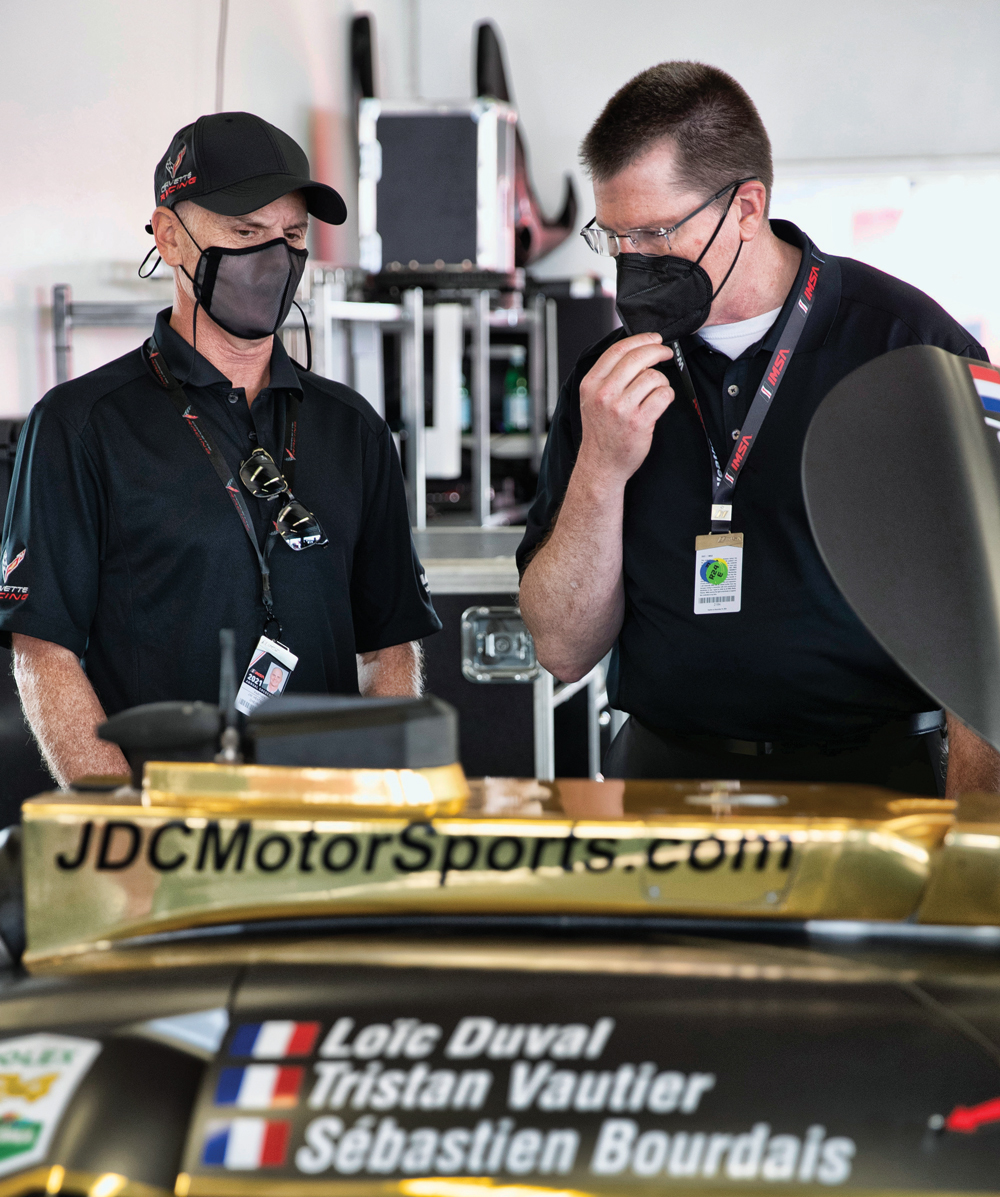
PRI: Mark, you are obviously very passionate about performance and racing. How has that passion influenced the cars and trucks you’ve been involved with at GM? How has it inspired you?
Stielow: You know, I’ve been fortunate. Growing up in Missouri my dream was to work in the automotive industry. This is all I ever wanted to do. I feel extremely lucky that I’ve been able to play a small part and write a little bit of history in motorsports and performance in these different roles. There was always a drive to learn, and I love the technical aspects of these cars. I like digging into the details and doing reviews, getting into the nuts-and-bolts of things. At my core I’m a hot rodder, I build hot rods at home. I understand the full vehicle better than a lot of people because I grew up in vehicle integration at General Motors. I’ve worked on a lot of different areas. I’m very interested in the vehicle systems and making them perform better. We’re trying to win races and be in the hunt with our competitors, and that is rewarding. In motorsports you get your report card much more quickly than on the production side, but I really cut my teeth doing the production development work.
PRI: Touching on electric power a little bit more, it seems that we’re seeing two distinct “flavors” of electric power in terms of performance: hybrid and full-electric technology. Do you have an opinion on which technology will become more prevalent in motorsports?
Stielow: It’s hard to tell. There are a lot of straight-up physics involved. The amount of energy that a gallon of racing fuel holds versus how many kilowatt hours that converts to and how much battery you have to carry around to do that, for example. I’ve got a feeling there might be a huge technological jump (coming) that will help the storage of power on the electric side. But for the foreseeable future, in my opinion, for anything resembling endurance racing we are still going to have IC engines. The power density of fuel is so much greater than electricity at this point. But for things like sprint races, and Formula E where the races are shorter, electric power will be right in there. So as technology grows…I think we’re going to learn a ton about batteries and battery controllers and motors as we push those components harder in motorsports. That technology will then trickle back to the production side.
PRI: The automotive industry has always been about competition. Very intense competition among GM, Ford, and all the other players. When you have an emerging technology—such as electric—where everything is shifting rapidly, how do you stay in front? How do you maintain and hold a lead when technology is changing? It looks like that would be exceptionally difficult.
Stielow: I think back to the 1950s and 1960s, when the GM Research Labs developed a lot of new technologies that spread not only through GM but throughout the auto industry. We’ve been in the battery and electric vehicle space for a long time, and when GM focuses in on a program, we do a good job. We’ve got a lot of guys in the R&D space, developing new battery chemistries, and we’re coming up with some different things. We’re pulling at it full-tilt. I think we’re going to be successful.
I think some of the other competitors out there got into the EV space because there are really no emissions requirements there; it’s easy for a small manufacturer to get involved because you don’t have the overhead of making sure things are emissions compliant. So a lot of those companies are using off-the-shelf technology in terms of batteries. All the OE’s are going to be pushing hard to come up with a way to make our battery chemistry more effective, less reliant on precious metals, and make our battery packs more cost-effective, more efficient, and hopefully lighter as well.
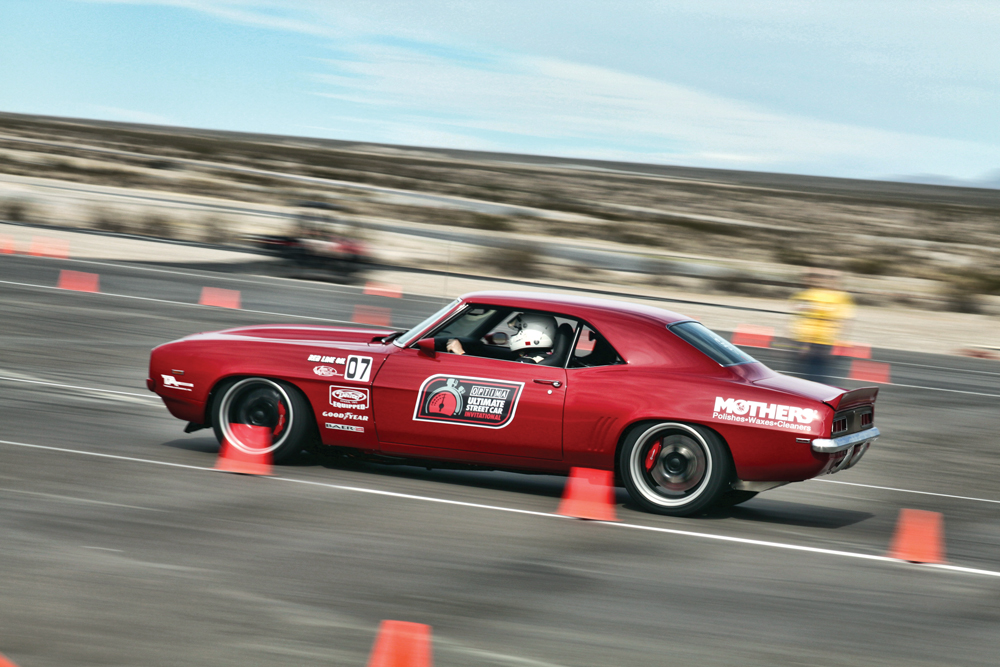
PRI: You also mentioned in a previous interview that in a perfect world companies could share information that could accelerate the development of electric technology. But obviously in the hyper-competitive environment of automotive manufacturing, sharing information would become pretty complicated. Is that good or bad? Would it be better if companies collaborated, or is it better to foster a competitive environment?
Stielow: We’ve actually partnered with others on various projects, so it is definitely possible to collaborate. We’ve partnered with Honda to share some of the battery technologies, for example. It is capitalism at work, we’re all trying to come up with the best system we can. When you partner you learn things from them, and they learn things from you. We’ve collaborated on other things as well. For example, Ford and GM worked together to develop the 10-speed transmission and it is shared between our two companies. Some things we share on, and some things we don’t. It’s an interesting time, for sure. GM is one of the largest auto manufacturers and we have developed a lot of technologies.
PRI: I’m curious about the future of the IC engine. Will we see a rapid transition and see the IC basically abandoned, or will there be a long-term place in motorsports for IC technology?
Stielow: We’re going to have IC technology in motorsports for a long time. The example I use all the time is a horse. There is no reason to have a horse in today’s society, yet my wife owns one and she goes riding three times a week. There are events surrounding horses, and they still have the Kentucky Derby, steeplechase events…people still love horses. So no matter what happens with electric power, we’re still going to have internal combustion engines because we love them. They don’t make horses any smaller these days, so if you’re going to haul a horse trailer across the country, the power density of diesel fuel and the ability to refill a heavy-duty truck with diesel versus recharging with electricity, in my lifetime I don’t think we will see electric replace the diesel in that situation. There will still be internal combustion engines to do workhorse things.
And I think there will be internal combustion engines in racing, especially endurance racing and forms of motorsports where it just makes more sense. The fans like the sound, and the thrill of seeing a NASCAR machine go by at 200 mph, and seeing a Top Fuel car go down the strip at 300 mph. That is going to stay around because people love it. I love it, you love it, and we’ve spent our entire life going to motorsports events. It’s not just the speed, it’s also the sound and the experience. That feeling in your chest when a Fuel car fires up, you’re not going to replace that with an electric vehicle. That’s my argument for the IC engines. But heck, you can still find guys who like to use steam tractors to pull things around. So the days of the IC engine are going to last for a long time yet to come. We’ve developed them to a fine level, and they are extremely efficient. They are great! I’m an old-school guy, too—I still like firing up a good small block Chevy and hearing that rumble.
PRI: The automotive business is driven by sales and profits, and not just by performance. As you develop various technologies at GM, how do the business realities influence your work? Do you always have an eye on how all of this can transfer to the cars we drive on the street?
Stielow: We try to. There are things we can experiment with. But unfortunately, the days of having a lot of discoveries in motorsports have been narrowed down by the sanctioning bodies. We’ve been kind of pushed into very tight corners on what we can and can’t do. Definitely from the performance side, the things we learn in motorsports we apply to a car such as the Corvette, for example. We get farther into simulations that really help the production side. The best example is that (in motorsports) they’ve tried to cut down the amount of testing we can do, and with COVID-19 that has so drastically limited practice that you almost have to come off the transporter ready to race. Which means your SIM tools have to be really good. So a lot of work is being done with tire modeling, vehicle modeling, and driving simulators to really make the car good when it comes off the trailer.
On the production side, we want to get away from the expensive early-development vehicles and shorten our development cycle. We want to be able to go from an idea to a production car in a shorter period of time. That takes a similar kind of simulation tool. Vehicle modeling, tire models, engine models, those kinds of things. We can virtually integrate these cars along the same lines as motorsports, which really shortens our development cycle and shortens the amount of time we need to tune the pre-production vehicles before they go into production. The tightest linkage between motorsports and production is the gain in technology in the simulation space.
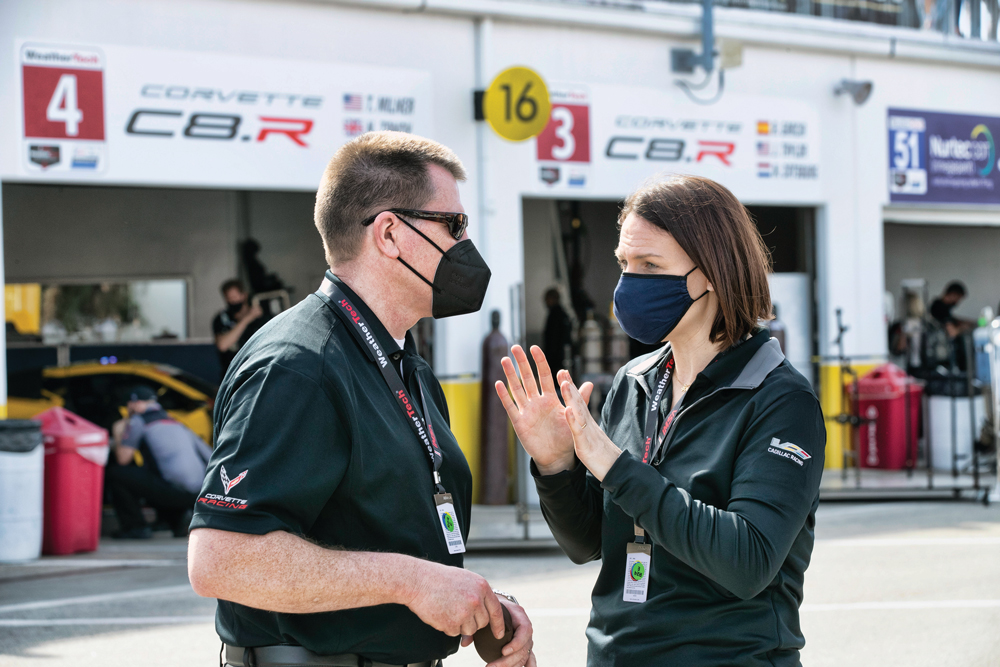
PRI: Let’s shift gears a little bit. You’re very unique, Mark, in that while you’ve maintained your career at GM, your interest in Pro Touring vintage Camaros has turned into a significant part of your life. How do you balance? How do you make the two interests co-exist?
Stielow: I don’t watch football, I don’t watch basketball, I don’t play golf…my hobby is building hot rods. I relax by going out in the shop and working on my projects. I’ve done this since I was 16 years old, it’s something I’m passionate about, something I like to do. I’ve always got one of those projects in the hopper, kind of messing around with it. Luckily, I’ve been fortunate and enjoyed a little bit of exposure out of it. When I was younger, the first time I was in Hot Rod Magazine or on the cover of Car Craft, I thought that was super cool. It’s still fun to play with it and push the envelope. I learn things at work and I try to apply it to my hot rods. Over the years, each version has become a little bit nicer.
PRI: I’m the proud owner of a 1969 Camaro myself, Mark, and I have to say, this is very interesting to me. Today’s cars have tremendous performance characteristics, yet people are still fascinated with making a 50-year-old machine drive and race like a modern car. What drives that fascination?
Stielow: I think there is a nostalgia there, for the aesthetic of the old car. And then you really want it to perform more like a modern car. When I started working with these (vintage Camaros) back in the 1990s, I wanted to put some of the more modern technology into something that looked like a 1969 Camaro but I could drive cross-country, and could take to open track days. I started hardening the car and making it faster, and as I got a little older, I also wanted air conditioning and a modern radio and more comfortable seats, which meant that my wife would go with me, right? And I’ll enjoy cruising more. But I just enjoy the aesthetic and the look and feeling of driving around in an old ’69 Camaro. Earlier generations hopped up ’32 Fords, but our generation likes ’69 Camaros. Because that was the car you either had in high school or aspired to have in high school. When you got older and could afford one, you bought one and discovered that it drove like crap! And then you proceed to try and fix it. At least that’s what I did.
PRI: So bottom line—and I’m just having some fun here—can you make your ’69 Camaro handle better than a C8 Corvette?
Stielow: (Laughing.) No. I have this conversation with people all the time. It’s just the simple laws of physics. A Corvette has better CG, better aerodynamics, better track width, and is better integrated. A C8 Corvette is a wonderful car and they drive great. They have a tremendous bang for the buck. You can buy almost any old muscle car, and the performance would not stand up to a new Corvette. They do everything better. It’s just that they don’t look like an old muscle car.
PRI: Your passion for performance has served you well in your career. When you look back, can you pinpoint the origins of that passion? Can you identify what turned you into a car guy?
Stielow: My dad was of the old school where we had to kind of keep our junk running. My dad also had a trash hauling company, and he would allow me to take things apart and put them back together. That’s really what drove my mechanical fascination, he kept me occupied disassembling engines and different parts. I became enamored with mechanical things, and later came radio-controlled cars. As soon as I could get my driver’s license, I got my first car. I remember the first time somebody let me go to the drag strip, I was fascinated by the fact that I could hold my foot all the way down on the throttle, wide open, for the whole quarter-mile! That was amazing to me, because on the public roads you couldn’t do that. Then I started wanting to make it go faster down the quarter-mile, and it all kind of snowballed from there.
PRI: We’ll close with this, Mark. If you are approached by a young engineer who is interested in getting started with a factory performance car, what advice would you give that young engineer?
Stielow: I think the best bang for the buck is to get a C5 Corvette. That is a fantastic car. If you think about it, when you were younger you wished you could buy an all-aluminum small block Chevy, a six-speed transmission, ABS brakes, independent front and rear suspension with aluminum upper and lower control arms, and 385- or 400-hp, stock. I mean, that’s the stuff of legends. The C5 Corvette has all of those things. Think about that, if your Camaro back in 1969 had all that equipment it would have been a dream. I love those C5 Corvettes and I’ve got a super-soft spot in my heart for those things.
PRI: I appreciate you giving us some time, Mark. Thank you.
Stielow: Thank you, Dave. And we’ll see you at PRI this year.
 MEMBERSHIP LOGIN
MEMBERSHIP LOGIN JOIN PRI
JOIN PRI


